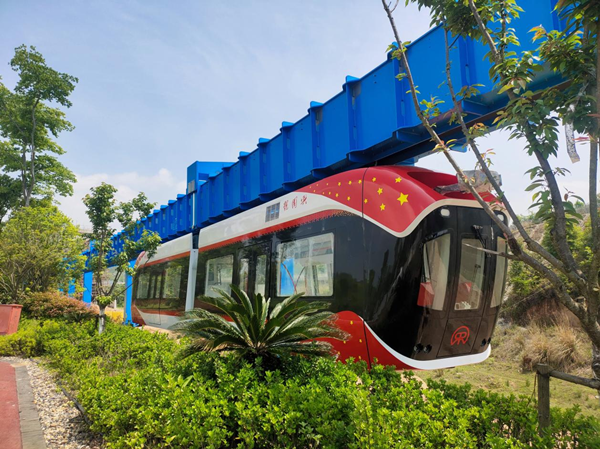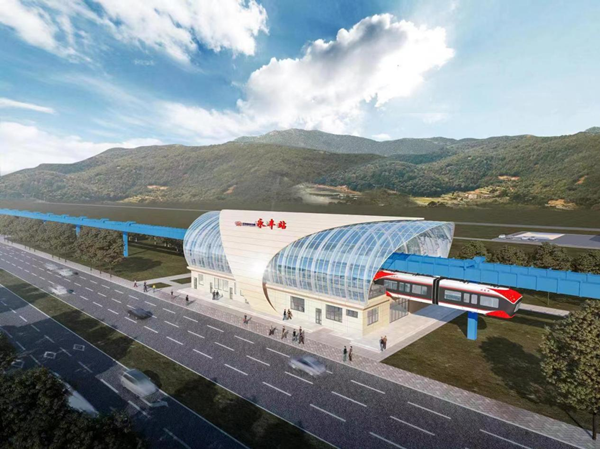The Xingguo permanent magnetic levitation (maglev) line, the first of its kind in China, is now under adjustment in Xingguo County, East China's Jiangxi Province.
The Xingguo permanent maglev line adopts a suspended monorail structure and is designed for a speed of 80 kilometers per hour. The main line covers about 800 kilometers and areas for construction of double-line and long-term operation have been reserved.
Construction of the project started in February 2021 and trial operation is scheduled to begin this July. China Railway Liuyuan Group Co., Ltd. and China Railway Baoji Bridge Group Co., Ltd., both subsidiaries of China Railway Group Limited (CREC), participated in the project.

A Xingguo train operates on the maglev line. [Photo/sasac.gov.cn]
The Xingguo train, which will operate on the maglev line, is the world's first application of the permanent maglev technology, which will make the train energy-saving and environmentally protective. Thanks to the technology, the train has strong climbing ability, a small turning radius and low noise, and zero magnetic pollution.
Those features make the train an ideal vehicle to be used in urban areas, business centers and special towns, and render it suitable for regions along rivers and around lakes and for operation in high altitudes and cold areas and deserts.
The body of the Xingguo maglev train is painted in red and white and has 56 stars on both sides of the locomotive, symbolizing 56 generals from Xingguo County who contributed to the establishment of China.
The permanent maglev rail is a new type of rail transportation that based on normal maglev and superconducting maglev technologies, in which China has completely independent intellectual property rights.
The Xingguo test line is expected to explore high-quality, customized and smart transportation with low and medium-transportation capacity that adapts to complicated landforms and can complement subways and light rail systems.

A design image of the Yongfeng Station of the maglev line [Photo/sasac.gov.cn]
(Executive editor: Wang Ruoting)